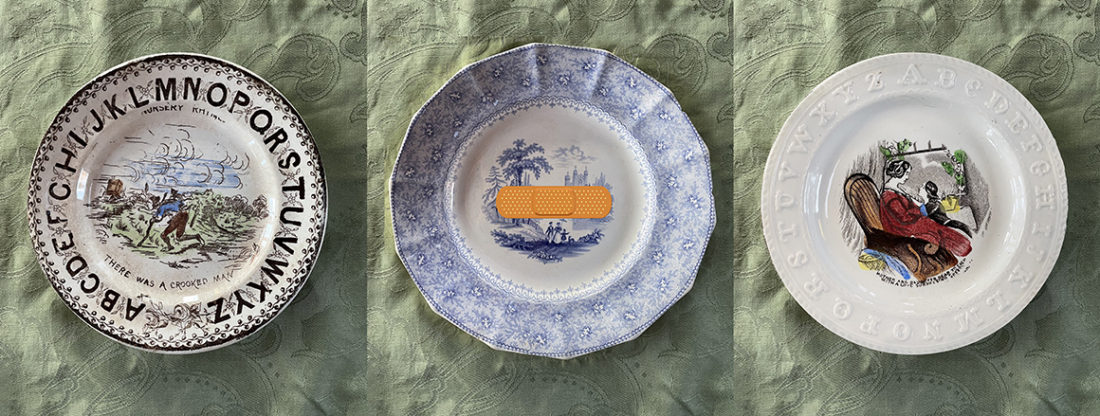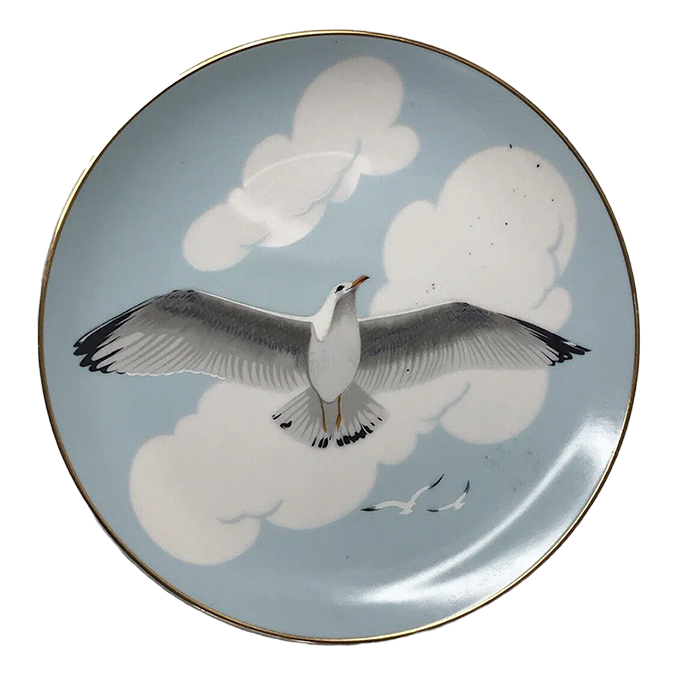It is two weeks past Christmas. I’m sitting in my Honda, one of at least thirty vehicles in a four-block long line inching toward a common destination: the big blue Goodwill bins. Cars swerve past us, and someone lays on the horn and screams an expletive because the procession blocks traffic on a busy street. There is nowhere else for us to wait. Modest, shabby homes line this main arterial. A Stop-n-Go market advertises high octane energy drinks, salty snacks, and cigarettes. I activate my wiper blades to sweep away drizzle.
It is my first trip to Goodwill in two years. When the Covid pandemic shuttered the donation center my bags of castoffs grew and spilled to my bedroom closet floor. When I was a younger woman, our family moved frequently because of my husband’s work. I am now single and in my seventies. It’s been twenty-five years since my last move and these days the only stuff I need to worry about is my own. I work hard to eliminate clutter and I’ve become pickier about purchases—the older I get, the more I crave freedom from possessions, especially the stuff that burdens rather than enriches my life. Each bulging Goodwill bag is a victory that delivers a giddy rush of joy.
I am a naturalist and retired environmental educator who taught children and adults about ecosystems and the three Rs of environmental education: reduce, reuse, recycle. Today, however, I feel like the anti-naturalist. My 2004 CR-V inches forward at the velocity of a banana slug. Unlike nature’s ultimate recycler, however, I sit in an idling car, contributing to global warming. I hope my castoffs will be reused and recycled; but in reality who knows—they may molder in a landfill. My bags of discards include black patent leather shoes I wore twice, too tight jeans, an impulse-purchase shirt I hated after one season, jewelry from a past life, random notecards, a white elephant gift exchange item—matching wooden salt and pepper shakers that look like tiny outhouses—multiple tchotchkes from well-meaning friends, and an unsolicited polar bear toy stuffed with tiny plastic beads—Made in China—and sent to me as a token of thanks from an environmental organization to which I donated. Each foot closer to the blue bins is another foot closer to freedom from stuff.
Waiting gives me time to think and my thoughts linger on the word freedom—or rather, the loss of freedom. It’s been twenty-four months since Coronavirus was first detected in Washington State. I’m wondering if life will ever return to normal. We can’t reclaim two years lost. Two years after the pandemic’s onset most of Seattle remains masked. Several of my friends still won’t meet in person. After two years life doesn’t really feel much different than it did at the start of the pandemic. In a shrunken world, few places other than my home or car feel free.
During the early days of the pandemic, I would get in my car and drive just for the sake of driving. I never knew or cared where I was going. I didn’t think about the environmental impact of my abbreviated road trips to nowhere. Was I selfish? Enclosed in a box of glass and steel, Fleetwood Mac at full volume, and speeding north on the I-5 numbed me from pandemic fears. Maybe, if I drove far enough and fast enough, I could leave the virus behind me. Exhilaration replaced anxiety. I felt free.

It’s no secret, burning fossil fuels contributes to global warming. During those “road trips to nowhere” I ignored the facts, escaped to the open road, and reclaimed my joie de vivre. Today I open my car window, lean out, and count the vehicles ahead of mine. Sitting in this line is no escape. My impatience and guilty feelings grow along with my carbon footprint. I try to justify my actions. One more car won’t make that much difference. It’s not like you do this every day. And how else will you unload your trunk load of stuff? As hard as I try to be a good citizen of the planet, I’m only human. I’m still adherent to the three Rs, buy organic when I can, and I limit my use of plastic bags. Each of us can only do so much.
But this I know: for every ten minutes of idling a car emits into the atmosphere one pound of carbon dioxide—the most common human-caused greenhouse gas.
I check the time. It’s been five minutes and I’m nowhere near the big blue bins. My environmentalist voice urges me to return when it’s less crowded, but the anti-naturalist reminds me of my carload of castoffs. I stay in line.
I redirect my thinking back to my joy of driving. How can this tree-worshipping, septuagenarian, environmentalist enjoy a love affair with her car and still honor her naturalist values? There are no easy answers.
I was a child during the 1950s, a decade of economic growth and prosperity in this country when automobiles provided low-cost mobility for families traveling to national parks or the seashore. Roadside motels provided inexpensive lodging. Burger and sandwich joints thrived, especially the drive-in restaurant, where food was ordered, then delivered by a server, a.k.a. a carhop, and eaten in the car. I spent my youth eating in cars. My father was one of Seattle’s first restauranteurs to introduce the city to the dine-in-your-car experience, and to this day eating food in an automobile summons happy memories.
My Honda creeps forward. I’ve been inching and idling for fifteen minutes—if anyone’s keeping track, that’s one and a half pounds of carbon dioxide. Well at least my car’s not belching blue exhaust plumes like that Jeep in front of me. Many of my friends now drive hybrid-electric vehicles. Some suggest my car is unsafe because it lacks the contrivances of new cars—the beeping, flashing, and slowing features that drive me nuts.
My SUV may not be flashy but she’s reliable. Sure, I’ve longed for a sexier vehicle, but I also value my car’s practical side and I feel secure sitting behind the steering wheel—my body and the driver’s seat a perfect fit. I know her quirks and after eighteen years our long-term relationship has settled into a comfortable one. I love the way she slips smoothly from one lane to another. How she hugs the road and manages twists and turns so effortlessly that it feels as if my body and car are one when we lean into the curves.
When I’m in my car these days I feel nostalgic for past road trips. I have traveled throughout the west and visited many of this country’s most revered lands. The irony of this is not lost on me. Years ago, during a visit to Capitol Reef National Park, I hiked through narrow canyons and watched the moon rise above red rock painted with ancient pictographs. Without a car I might not have stood beneath California’s redwoods, or discovered scorpions and saguaro cactus in Arizona, followed New Mexico’s turquoise trail, hiked in Montana’s Glacier National Park, come face to face with a baby mountain goat, or walked across an icefield in Canada. My Honda is a good travel companion.
A soft horn tap rouses me from my reverie. I crawl forward, close enough now, after twenty-five minutes, to scrutinize the growing piles of castoffs filling the big blue bins. There’s luggage, board games, giant bags of Christmas bows, tattered, woven-polyester aluminum-frame lawn chairs, a powder-blue molded plastic shower seat and walker (also blue), and a beige area rug that’s rolled up and looks like a giant burrito. So much stuff.
Through my partially open window I hear a bird cry. I lean forward and look up. Out my windshield I spot a gull circling overhead. I have wasted almost thirty minutes in this line, adding nearly three pounds of carbon dioxide to the atmosphere.
I’m two cars away from entering the final queue. I slip into a smaller line and wait for instructions. An employee gestures. In three swift hand motions he signals where to move my car, and into which bins to drop donations. I put my discards into a half-filled bin and say a final goodbye to the polar bear, wishing it a good life in a new home.
The gull is still circling overhead. It’s as if that bird is sending a message: Look at me, I’m free.
- Goodwill 2022 - December 20, 2023

